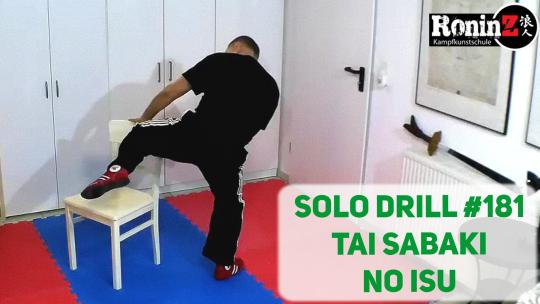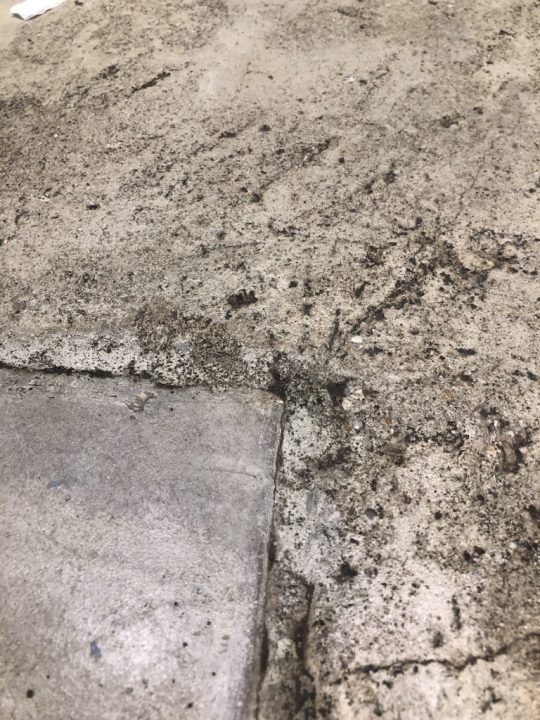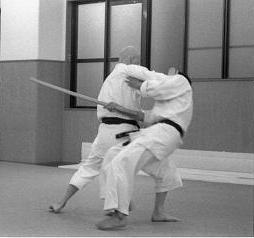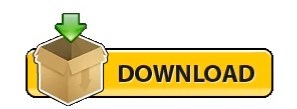#tai sabaki
Explore tagged Tumblr posts
Text
Pull down then shoot in the underhook. Dig for head position if they clamp down otherwise shrug them off and take the back.
Once you’ve got them pushing back and gotten wrist position hit the tai sabaki (体捌き) and either go straight into harai goshi (払腰) or hit a half tai otoshi (体落とし) first to fully off balance them
If they start to hip out in response, then go for kosoto gake or kouchi gari (河内刈り) instead, depending on which legs easier to get to
3 notes
·
View notes
Text
11eyes Rabbit Trails
As I was playing 11eyes, I made a list of interesting concepts/people/cultural/historical things that the characters brought up. Some of these I already knew about, but a lot I had to Google (hence "rabbit trails.") If I have time, maybe I'll come back and organize this one day.
Paracelsus & the elementals (Salamander, Undine, Sylph, Gnome)
Aristotle - Soma, Psyche, Pneuma
Aether (Bonus elemental)
Amnesia
Mutism
Hemiplegia
Onmyodo/Onmyoji
Yin & Yang (concept)
Maid cafes
Kamiizumi Nobutsuna
Yagyuu Shinkage-Ryuu
Onan (Biblical character)
Wajiro Kon
Raikiri
Tachibana Dousetsu
The Tale of the Heike (Kogarasumaru Amakuni)
Uesugi Kenshin
Gazu Hyakki Yagyou
Dōjigiri
Kempo
Vlad the Impaler (Voivode of Wallachia)
Breaking Wheel
Lucky number seven
The Seven Samurai
Six Auspicious days
Seven Luminaries
Kagome crest and lattice
Star of David
The Lesser Key of Solomon
Iskender kebab, harees
Alexander the Great
Reality lacuna
Haggle (Sid Sackson)
Friedrich Nietzsche
Phantasmagoria
Scholastica and Benedictus
The Seven Deadly Sins
Aeon of Horus
Thelema (philosophy)
Aleister Crowley
Carl Gustal Jung
8 emanations of Aeon (Gnosticism)
Demiurge
Zoroastrianism
Zurvanism
Mithraism
Mehed
The Womb Realm
Anattā
Edgar Allan Poe (The Black Cat)
Tai chi
Iskandar (Alexander the Great)
Satanail
Hand of Glory
Tai Sabaki
the supreme sacred congregation of the roman and universal inquisition (Sacred Congregation of the Index)
The Holy See
Galileo's Systema Cosmicum
Feng Shui, Li Qi, Loan Tou
World War II
The Crusades
The Whore of Babylon
Parallel worlds (quantum mechanics)
Crom Cruach
Qliphoth
Occitanian city of Bersièrs
Bythos
Sylph
Pnumea
Consolamentum
Pleroma
Nitocris
The Emerald Tablet (Tabula Smaragdina)
Magi/Wise Men
Morpheus
Pope Innocent the Third
Arnaud Amalric
Kukurihime (Nihongi)
Izanami and Izanagi
Niederhagen
Charlemagne
Paderborn Cathedral
Crest of the Black Sun
Heinrich Himmler
Adolf Hitler
Wewelsburg Castle
Longinus Dreizehn Orden/Black Camelot
Ahnenerbe
Thule society
The Hermetic Order of the Golden Dawn
Simon Magus
Fuu Manchu
The Holy Nails
Petronius
Bajiquan, Katori Shintou, Aizu Kage, Nen, Itto
Sun Tzu
Scopolia (Nightshade)
Battle of Dan-no-Ura
Der Ring des Nibelungen
All Saints Day
Penis Festival
Monte Cristo sandwich
0 notes
Text
Hướng dẫn 10 kỹ thuật võ karate tự vệ tại nhà
Vì sao võ Karate tự vệ hiệu quả? Võ Karate tự vệ hiệu quả nhờ vào sự kết hợp giữa kỹ thuật tấn công và phòng thủ linh hoạt. Môn võ này rèn luyện cho người tập khả năng ra đòn chính xác, tốc độ nhanh, và sức mạnh mạnh mẽ. Các kỹ thuật của Karate giúp người học biết cách phản xạ nhanh chóng, né tránh, hoặc tấn công dứt điểm trong các tình huống nguy hiểm. Ngoài ra, Karate còn phát triển tinh thần tự tin và kiên nhẫn, giúp người tập giữ được sự bình tĩnh khi đối mặt với nguy cơ.

5 kỹ thuật võ Karate tấn công tự vệ
Đấm thẳng (Oi-zuki): Kỹ thuật đấm nhanh và mạnh vào các điểm yếu của đối thủ.
Đá thẳng (Mae-geri): Đòn đá trực tiếp vào phần bụng hoặc ngực, làm mất cân bằng đối thủ.
Đá xoay ngang (Yoko-geri): Đòn đá mạnh và hiểm, dễ dàng tấn công vào vùng sườn.
Chém cạnh bàn tay (Shuto-uchi): Đòn chém mạnh vào cổ hoặc vai, gây đau đớn và làm đối thủ mất kiểm soát.
Đấm móc (Kage-zuki): Đòn đấm mạnh vào vùng cằm hoặc bụng, tạo sức ép lớn lên đối thủ.
5 kỹ thuật võ Karate phòng thủ tự vệ
Đỡ trên (Jodan-uke): Kỹ thuật đỡ các đòn tấn công vào đầu hoặc mặt.
Đỡ trung bình (Chudan-uke): Phòng thủ các cú đấm thẳng hoặc đá vào phần ngực.
Đỡ dưới (Gedan-barai): Phòng thủ các đòn đá thấp hoặc cú tấn công vào chân.
Đỡ chéo (Juji-uke): Kỹ thuật đỡ các đòn đánh chéo, tạo sự linh hoạt trong phòng thủ.
Né người (Tai-sabaki): Kỹ thuật di chuyển và né tránh, giúp tránh đòn tấn công và chuẩn bị cho pha phản đòn.
Tham khảo thêm về chủ đề Võ tự vệ tại Website của Kickfit Sports!
0 notes
Text
variety of karate forms
Karate forms include a variety of styles, each with its own techniques, ideologies, and training methods, such as Shotokan, Goju-Ryu, Wado-Ryu, and Kyokushin. These styles vary in their postures, techniques, and approaches to self-defense; they frequently place an emphasis on particular methods. Every form offers a unique set of katas and training exercises based on the interests and objectives of practitioners.
1. Karate Shotokan
The classic shotokan style of karate was created by Gichin Funakoshi. Strong stances and strong linear motions are its hallmarks; kata, kihon, and kumite are given special emphasis. This method places a premium on focused training, emphasizing core skills and mental toughness.
2. Karate Goju-Ryu
Traditional Goju-Ryu karate places a strong emphasis on striking a balance between hard and soft techniques. It was developed by Chojun Miyagi and incorporates breathing exercises, circular motions, and close-quarters fighting methods. The term "hard-soft style," which refers to Goju-Ryu's combination of strong strikes and supple, flowing movements, describes this technique. This style emphasizes breathing techniques (kakie) and kata (forms) to build self-defense abilities and general fitness. It focuses a great deal of emphasis on developing both physical strength and mental toughness.
3. Karate Dojo Wado-Ryu
Wado-Ryu, established by Hironori Ohtsuka, combines jujutsu concepts with Okinawan karate. It emphasizes evasion and flexibility, and employs tai sabaki for quick counters. This style encourages versatility in battle by emphasizing katas, kumite, and regulated breathing. It incorporates conventional methods for effective self-defense while putting a focus on time and placement.
4. Karate Kyokushin
Mas Oyama created the full-contact karate style known as kyokushin. It is renowned for emphasizing intense training and the real-world application of combat methods. In order to develop endurance and resilience, kyokushin practitioners frequently partake in rigorous physical conditioning, such as bare-knuckle sparring and breaking methods like board and block breaking.
Influential Practitioners Across Karate Forms
There are notable practitioners of each style who have made a lasting impression on the karate world. From Gichin Funakoshi in Shotokan to Chojun Miyagi in Goju-Ryu and Hironori Ohtsuka in Wado-Ryu, these trailblazers made a huge impact on the development of their respective genres and helped them gain international prominence.
Conclusion
The karate world is made up of several different styles, each of which offers a distinctive method of discipline, training, and fighting skills. Exploring various techniques reveals a greater understanding of the art form, regardless of whether one is drawn to the balance of Goju-Ryu or the forceful stances of Shotokan.
1 note
·
View note
Text
24JUN23 Last Saturday, I had the super early class. Not so much this Saturday, but we still tramped down and got to work, even running with a very small class. Summer sickness is kicking folks' asses. However, I made up for it later with an impromptu afternoon class where we did some fun things we haven't focused on before.
Training:
0830-1030: Martial arts
kihon kata; shisei kata; kenpo short 1; kenpo long 1; kenpo orange belt; kenpo orange belt review; tedori yellow belt tip 1 finger, wrist, and elbow review
1500-1600: Martial arts
kenpo orange belt- opponents at sides; tai sabaki training
0 notes
Photo


BASILE FABIO
#judo#budo#ippon#massive#fabio basile#Italia#champion#ippon ko#seoinage#seoi#ko uchi#combo#uchimata#tornado#tai sabaki#move#slowmo#motion#combat#sports#gif#awesome#turkey#antalya#ijf#grappling#wrestling#fight#shiai#throw
13 notes
·
View notes
Text
Tai Sabaki no Isu | TDM#314
Tai Sabaki no Isu | TDM#314
Bewegung um den Stuhl herum. Tai SabakiHiza GeriEmpi TsukiMawashi GeriUra Mawashi Geri TRAINIER MIT UNS! Besucht www.roninz.de Abonniert unseren YouTube Kanal.

View On WordPress
0 notes
Text
Cross-Training for Aikido Pt 3: Principles Over Techniques
Cross-Training for Aikido Pt 3: Principles Over Techniques
As an aikido practitioner who wants to cross-train in more resistance-based arts, it is best to approach them using lower case ‘a’ aikido, which is a set of principles, than capital ‘A’ Aikido(TM), which is a set of techniques.

Wabi-Sabi Street Art Photo by Robert Van Valkenburgh (artist unknown)
One of the greatest hindrances to aikido practitioners cross-training in other, more…
View On WordPress
#aikido#atemi#bjj#brazilian jiu-jitsu#budo#cross training#irmi#japanese martial arts#kuzushi#maai#martial arts#principles#tai sabaki
0 notes
Text
Dreams and days, down the swirling drain, out the draft in the door, and through the spaces in between my fingers. I can't hold onto smoke but i can make myself aerodynamic and it will circumvent me.
#writing#direction#its about willpower#reverse willpower#tai sabaki#eh#ill h8 this entry when i wake up#why am i up#hastagmania#lmao#mania
0 notes
Text
Word of the Day: Kuzushi
Kuzushi (崩し:くずし) is a Japanese term for unbalancing an opponent in the Japanese martial arts.
The noun comes from the transitive verb kuzusu (崩す), meaning to level, pull down, destroy or demolish.[1] As such, it refers to not just an unbalancing, but the process of putting an opponent to a position, where stability, and hence the ability to regain uncompromised balance for attacking, is destroyed.
In judo, it is considered an essential principle and the first of three stages to a successful throwing technique: kuzushi, tsukuri (fitting or entering) and kake (execution).
Kuzushi is important to many styles of Japanese martial arts, especially those derived from, or influenced by, Ju Jutsu training methods, such as Judo, Ninjutsu, Aikido, Uechi-ryu karate,[2] Goju-ryu karate, and Wadō-ryū karate.[3]
The methods of effecting kuzushi depend on maai (combative distance) and other circumstances. It can be achieved using tai sabaki (body positioning and weak lines), taking advantage of the opponents actions (push when pulled, pull when pushed), atemi (strikes), or a combination of all three.
source: Wikipedia

6 notes
·
View notes
Video
vimeo
Training against tunnel vision with tai sabaki - Addendum to 3rd week AKBAN Ninjutsu from AKBAN academy on Vimeo.
This is a part of the live session in Tel Aviv dojo of the fourth week in the 2019 training year. The rest of the techniques are in this page akban.org/wiki/Training_week_number_4,_AKBAN_Ninjutsu
1 note
·
View note
Text
Teaching kendo to people in the 1st kyu up to 2nd dan phase is a challenge, because it’s the time where just randomly doing kihon waza in jigeiko feels ineffective without gradually getting a deeper understanding of the mechanics of pressure, opening (and later pulling-in).
However if you explain such principles to the 1st-2nd dan they just might become a bunch of machi-ken, “waiting swords” who never take any offensive action.
I understand when some sensei will just scold students for not practicing jigeiko with kihon waza in mind. Their logic probably being that giving too much information might do more harm than not explaining how things will work later on.
But I’d rather try and save my dojo members the frustration of hitting a wall. But I’m still telling them, “don’t practice with the advanced explanations in mind”. “Working properly and offensively should always be your focus, but while you do, notice what moving in does to your opponents’ posture or what reactions it triggers in them. Learn to first recognise where opportunities are - or more accurately, where they were - but don’t make it your goal to be able to seize them yet”.
I’ve used the analogy of building blocks. Every waza is divisible in moments and actions. To get to the next part of a waza, you have to be able to execute the first part of it — the first block — correctly.
An example : debana men from to-maai.
First block : kakegoe and then step into kamae distance. 2 : while keeping the left foot ready to push into an attack, move slowly right foot forward, kensen moving deeper into the opponent’s kamae (putting pressure / inviting a men attack) 3 : learn to see when aite starts his move 4 : learn to push your left foot into a men attack as soon as you see aite starting his own. 5 : correct footwork (adequate step distance to make up for the incoming opponent, strong fumikomi) 6 : zanshin : while in balance, follow through, stop, turn around using tai-sabaki and have the kensen move first.
Even some of these steps obviously have sub-building blocks but the idea is that if one does not take the time to calmly and purposefully complete an action, moving on to the next will create problems : weak seme, too many steps / poor footwork, wrong distance (no yukodatotsu) etc.
The same goes for longer learning processes as well. Without the practicing jigeiko as kihon, without the “always being on the attack” mindset the right attitude can’t be reached when time comes to think about toying with aite, pressure games, tactics that are put in place during the length of the encounter, oji waza, etc.
If the building block “attacking with correct basics is now natural to me” isn’t there, we can’t get to the “I now know when I should attack and what” nor the “I now manage to react efficiently when I see an opportunity” nor the “I now feel I can put aite in a place where he does what I want him to do”.
But I believe that for some people, knowing what the steps are, is also important. Knowing that there is a long game plan to their studying of kendo and that they are responsible for going through it correctly is something very important to me. It’s almost a matter of honesty and integrity.
Clearly, that teacher’s degree is making me veer off the traditional “they’ll figure it out by themselves” way of doing things. I’ll just keep hammering that “building blocks” analogy so that nobody neglects the important stuff : kihon waza!
14 notes
·
View notes
Text
Importance of ashi sabaki

BASIC ORIENTATION: All of these basic patterns are sanbon kumite-gata (three movement drills) usually described as having the following parts: A) Kaishi ('Opening' or start circumstances) B) Uke'ai sometimes called uke'iri ('Meeting the attack') and C) Toritsuke also called tori'ai (the 'Capture' or throwdown.) These are the three basic parts of the Sanbon kumite gata (3 movement drills) which are done empty handed, but also are done with the sword and the staff (the kata name doesn't change), but the kata, when done with weapons is instead called Sanbon kumitachi kata (proper terminology for weapons inclusion.) There are four (4) forms of these as weapons kata, muto-dori and hanbo-dori gata (you empty-handed against his using a stick or sword, if a short-sword it is 'kodachi-dori') otherwise there is 'hanbo no kihon gata' and 'kodachi no kihon gata', but the Torite goho only occur as kihon gata when in muto-dori and hanbo dori (you emptyhanded against a weapon.) Otherwise, the Torite do not occur when the weapon is employed. So of the Jujutsu kihon no happo, via the process of inter-combination, it is possible to generate a total of 15 inter-combined basic drills (3 X 5 = 15) and due to the three henka for each, a grand total of 45 of the inter-combined basic drills (15 X 3 henka = 45 drills.) Most instructors, including myself, have never really bothered to make students explore all 45 possible inter-combinations, but some students did tend to explore them in hopes of developing further skill. These basics are common types of kihon-gata for the jujutsu schools to which SYR is related, and variations of the same kihon-gata can be found in just about any of them (sometimes there are more listed than what we have, other times they have a completely different name but with similar technical content.) There are, in the Jujutsu kihon no happo, three (3) striking drills and five (5) grappling drills, the intention is that the two types of drills be inter-combined, since that is exactly what happens in the Formal patterns of kata no keiko from which they derive. These are sub-divided into two (2) groupings, the Atekomi sanpo Three striking methods (sometimes called 'atemi sanpo') and the Torite goho or Five grappling methods. They address the basic mechanics and technical content of the various formal patterns listed (the Kata no keiko.) There is more information per kihon gata under the actual entry in these discussions. The kihon-gata (all three categories) are actually simplifications of the Kata No Keiko (formal patterns) themselves, meant as a preparation for learning and using the formal, or actual, patterns of the school. This is 22 basic techniques X 3 = 66 (the final basic entry is kakushi buki and does not count as being subject to the rule.) These 66 are only kihon-gata basic techniques and are not given a whole lot of emphasis, some of the instructors used to consider them more relevant for children or for adults whom had no former MA experience. This arrangement of basic materials always has three henka available (omote, ura and gyaku – inner, outer and reverse of the technique.) hence the total base number of basic technique patterns is 66. These three basics consist of (1) the Kihon happo Basic Eight Methods, (2) Tai sabaki Basic Forms of Body and (3) Goshin katas. In the Shinden yoshin ryu, the basic technique forms are all contained collectively within the jujutsu-no-kihon-sanpo. Jujutsu No Kihon Sanpo Basic Three Methods of Jujutsu From Shoden No Maki, the following instructions

0 notes
Text
Ableiten, Greifen und Tai Sabaki mit dem kurzen Stock | TDM#548
Ableiten, Greifen und Tai Sabaki mit dem kurzen Stock | TDM#548
TRAINIER MIT UNS! Besucht www.roninz.de Abonniert unseren YouTube Kanal. buymeacoffee.com/roninz

View On WordPress
1 note
·
View note
Conversation
-- before warmup
Sensei: So, it's almost exam day, isn't it?
Me: Yes... not quite there yet though... need to roll a bit more.
Sensei: Is there any exam technique you don't get?
Me: Well... my hip and leg move on ryote dori, fluid version, could be better (nervous chuckle). It's ok, I'll work on it after class.
Sensei: Hmmm...
-- after warmup
Sensei: OK folks, so today it's all going to be about ryote dori, jiyu waza version. Let's work on your tai sabaki, people.
Everyone under 2nd kyu (=80% of the people on the mats tonight): Wut? (sweat) What was that? What is he even talking about?
Me: Ahahaha.. ah. ah. aaaaaaaah---- (mumble) Maaaaybe it's my fault, sorry people...
-- after one hour
Sensei: Ah, now it works, doesn't it? See the difference?
Me: (wheezing, panting) YEAH. Th... thanks.
#aikido#budoblr#my sensei is awesome#this dojo is awesome#can't hope for better support#my sempai are already planning a post-exam dinner party#I love them all#dojo#budo#martial arts
34 notes
·
View notes